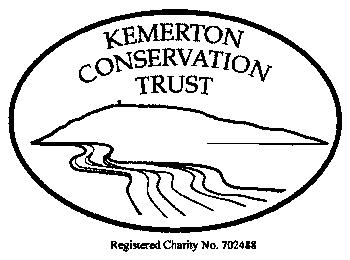Experimental Monitoring Project at Kemerton
By John Clark and Charles Morgan

Experimental Monitoring Project at KemertonBy John Clark and Charles Morgan |
 |
Monitoring wildlife on our farmland is often difficult, requires considerable skills and is time-consuming. All too often, conservation schemes are introduced with funding for only baseline monitoring; and when further work is required the financial situation has changed, or new priorities have been set. Using methods such as quadrat monitoring of the flora or detailed entomological surveys may be necessary within individual scientific research projects, but they are not practical in the wider, real world of farming or of managing large numbers of nature reserves.
In 2000, with backing from English Nature and the Environmental Agency, Kemerton Conservation Trust began a ten-year project that aims to demonstrate a simple method of monitoring the effects on wildlife, of changes in farmland management. The project is based on the principle of identifying a few ‘indicator’ species or groups for a particular farm or site. These ‘targets’ should be suitable for monitoring in a relatively short time – and allow the use of field workers with lower or few scientific skills.
The Kemerton project wishes to assess the value for wildlife of changes made in the management of Kemerton Estate under schemes such as Set-Aside and the Countryside Stewardship Scheme. Farmland habitats affected by these and other changes include hedgerows, hedgerow bottoms, a number of grass margins and arable wildflower margins, stream-sides, ponds and woodland edge. A comprehensive monitoring scheme to assess the improvements for wildlife, covering all these habitats - on just one farm - would be huge, expensive, and, practically, unnecessary. However, in order to check the efficacy of the experimental, simplified scheme, it will be necessary to undertake a certain amount of more detailed monitoring.
Kemerton has selected three main elements for the simplified scheme:
| Birds | The indicators are breeding Skylark and Yellowhammer. |
| Invertebrates | The indicators are numbers of Butterflies by species and Bumblebees by family. |
| Water quality |
The methodology is based on available resources but will be constant throughout the life of the project. In simple terms, the birds are surveyed over the whole farm; Butterflies and Bumblebees are counted along selected, representative transects; and water quality is checked in a selected range of sites. Additional surveys include other ‘important’ BAP breeding birds, woodland birds, and in conjunction with the game conservancy and BTO – Crops for Wintering Birds and Grey Partridge Counts. More scientific site-based botanical surveys are undertaken – usually on a five-year rolling programme. Data from recent intensive entomological surveys will be used as a baseline for comparison with future, selected surveys.
The theory is that any improvement in habitat quality for wildlife will be reflected by increases in populations of the target indicators and an improvement in water quality. This information should be verified by the more intensive research.
If this project is successful it is hoped that others will undertake low-level monitoring over a wide area rather than focusing resources on a few sites.
For further information contact the authors John Clark and Charles Morgan, Kemerton Conservation Trust
| WBRC Home | Worcs Record Listing by Issue | Worcs Record Listing by Subject |